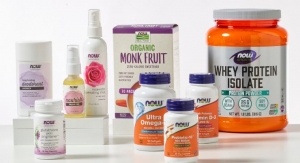Victor Moreno11.01.01
Fundamental changes in the dynamics of healthcare began driving the growth of the nutrition industry in the late 1980s. These changes included interest in self medication, an increase in the in�cidence of chronic diseases experienced by an aging population, dissatisfaction with the use of drugs for chronic ailments and consumers' belief that nutritional products were safer to use. Nutritional alternatives were given greater credibility with the issuance of the Dietary Supplement Health and Education Act (DSHEA) in 1994. This act was the main factor that propelled the industry to unprecedented growth through 1998.
However, at the beginning of 1999, the industry began a severe de�cline, re�sulting in significant loss of profits, a dramatic de�crease in the stock prices of public companies and rapid consolidation.
The reasons for the decline are varied. Consumer expectations about the use of nutritional products changed. Prior to the late 1980s, consumers worried that with their changes in lifestyle, their nutritional needs might not be satisfied. Given their belief in the safety of nutritional supplements, they took them as insurance against a perceived nutritional imbalance. However, consumers then began to use nutritional products to provide specific and measurable biological benefits. Therefore, the low expectation of "insurance" shifted in the last ten years to the more challenging expectation of "performance," which failed in most instances to be met. The industry also saw a heavy proliferation of new products making claims with little clinical substantiation. Contradictory scientific data was used by the me�dia to cast serious doubts on the efficacy of most nutritional products. This caused rampant consumer dissatisfaction with the products they were using. Worse yet, the safety of dietary supplements was questioned. As a result, consumers who used supplements for insurance also stopped using them.
It is worthwhile mentioning that the fundamentals that drove the growth of the industry are still intact. In fact the industry has considerable potential for growth if the correct actions are taken. Listed below are some of the changes that are very likely to occur.
Development of three distinct segments within the industry. Currently terms like functional foods, nutraceuticals and medical foods are used interchangeably and this is creating a lot of confusion in the trade. We will see the formation of three well differentiated segments emerge: functional foods, medical foods and nutraceuticals. Each segment will address itself to a well defined set of consumer needs. Functional foods will continue the efforts of the food industry to improve the nutritive value of foods and beverages. These products will be used primarily by healthy individuals to remain healthy. Food companies are likely to be the major players in this segment.
Medical foods, which is a category already regulated by FDA, will include pro�ducts designed to address the specific needs of people suffering chronic diseases and likely under professional care. This category, which includes infant formula, is small, underdeveloped and likely to undergo significant growth.
The nutraceutical segment will ad�dress three distinct groups of needs-to enhance both physical and cognitive performance, to slow down the biological manifestation of aging and to alleviate symptoms of chronic diseases. The products will have significant scientific and clinical substantiation to validate their safety and their efficacy. This category will experience very substantial growth.
The formation of companies capable of developing and substantiating novel and effective nutritional technologies. The num�ber of such companies with the re�quired staff�ing and budgets is very small. We anticipate that new nutritional development companies will be formed, staffed with personnel with substantial scientific and clinical expertise. They will in all prob�ability be funded by parties that funded the biotechnology industry or parties emulating these companies but adapting their funding modalities to the nu�traceutical segment of the nutrition industry. This will provide the impetus for the de�velopment of new and distinctive products with considerable growth po�tential. These companies will then either license their technologies or enter into strategic partnerships with in�terested marketing companies.
The development of brands with strong identities. About 80% of the products currently sold by the industry have no or poor brand identity. The availability of dis�tinct and superior nutritional technologies will provide the incentive to in�vest in aggressive brand building. This ac�tivity will enhance considerably the com�petitive edge of the companies that practice it. It also enhances significantly the monetary value of these companies.
Changes anticipated by current retail and raw material supplier companies. The first re�ac�tion to the industry downturn has been consolidation among retailers to increase mass and enhance profitability. While this trend will likely continue, it is already showing that it is not proving useful in the long term, as th edownturn is not driven by cyclical dynamics but by a fundamental change in consumer expectation. Successful companies will have to change their operating paradigms. They will need to combine excellent marketing acumen with strong scientific and clinical ex�pertise. They will increasingly resemble companies marketing OTC products.
Suppliers of raw materials will also undergo substantial changes. Currently, raw materials are supplied by a small number of large companies and a myriad of small companies with little technical or marketing expertise. Many companies are folding and aggressive consolidation is expected. These companies will continue to supply essentially commodity products. As was mentioned above, new nutritional development companies will be formed to develop, substantiate and market novel nutritional compounds and/or compositions. In fact some forward looking suppliers have started the process of transforming themselves to become future leaders in the changed industry.
Regulations will change. The intent of Congress in approving DSHEA was to make more nutritional alternatives available to the public. This intent remains. How�ever standards for claim development and substantiation will be revised to become more restrictive. These higher barriers will favor companies that adopt a science-based approach to the development and marketing of their products.
In summary, the nutritional industry has begun and will continue to undergo a fundamental transformation to become a significant and credible player in the health industry, not only in the U.S. but worldwide. The challenge is significant, but the growth potential is considerable. This is the dynamic that will motivate the change, bring the required investments and secure long term success.NW
However, at the beginning of 1999, the industry began a severe de�cline, re�sulting in significant loss of profits, a dramatic de�crease in the stock prices of public companies and rapid consolidation.
The reasons for the decline are varied. Consumer expectations about the use of nutritional products changed. Prior to the late 1980s, consumers worried that with their changes in lifestyle, their nutritional needs might not be satisfied. Given their belief in the safety of nutritional supplements, they took them as insurance against a perceived nutritional imbalance. However, consumers then began to use nutritional products to provide specific and measurable biological benefits. Therefore, the low expectation of "insurance" shifted in the last ten years to the more challenging expectation of "performance," which failed in most instances to be met. The industry also saw a heavy proliferation of new products making claims with little clinical substantiation. Contradictory scientific data was used by the me�dia to cast serious doubts on the efficacy of most nutritional products. This caused rampant consumer dissatisfaction with the products they were using. Worse yet, the safety of dietary supplements was questioned. As a result, consumers who used supplements for insurance also stopped using them.
Helping Resume Growth
It is worthwhile mentioning that the fundamentals that drove the growth of the industry are still intact. In fact the industry has considerable potential for growth if the correct actions are taken. Listed below are some of the changes that are very likely to occur.
Development of three distinct segments within the industry. Currently terms like functional foods, nutraceuticals and medical foods are used interchangeably and this is creating a lot of confusion in the trade. We will see the formation of three well differentiated segments emerge: functional foods, medical foods and nutraceuticals. Each segment will address itself to a well defined set of consumer needs. Functional foods will continue the efforts of the food industry to improve the nutritive value of foods and beverages. These products will be used primarily by healthy individuals to remain healthy. Food companies are likely to be the major players in this segment.
Medical foods, which is a category already regulated by FDA, will include pro�ducts designed to address the specific needs of people suffering chronic diseases and likely under professional care. This category, which includes infant formula, is small, underdeveloped and likely to undergo significant growth.
The nutraceutical segment will ad�dress three distinct groups of needs-to enhance both physical and cognitive performance, to slow down the biological manifestation of aging and to alleviate symptoms of chronic diseases. The products will have significant scientific and clinical substantiation to validate their safety and their efficacy. This category will experience very substantial growth.
The formation of companies capable of developing and substantiating novel and effective nutritional technologies. The num�ber of such companies with the re�quired staff�ing and budgets is very small. We anticipate that new nutritional development companies will be formed, staffed with personnel with substantial scientific and clinical expertise. They will in all prob�ability be funded by parties that funded the biotechnology industry or parties emulating these companies but adapting their funding modalities to the nu�traceutical segment of the nutrition industry. This will provide the impetus for the de�velopment of new and distinctive products with considerable growth po�tential. These companies will then either license their technologies or enter into strategic partnerships with in�terested marketing companies.
The development of brands with strong identities. About 80% of the products currently sold by the industry have no or poor brand identity. The availability of dis�tinct and superior nutritional technologies will provide the incentive to in�vest in aggressive brand building. This ac�tivity will enhance considerably the com�petitive edge of the companies that practice it. It also enhances significantly the monetary value of these companies.
Changes anticipated by current retail and raw material supplier companies. The first re�ac�tion to the industry downturn has been consolidation among retailers to increase mass and enhance profitability. While this trend will likely continue, it is already showing that it is not proving useful in the long term, as th edownturn is not driven by cyclical dynamics but by a fundamental change in consumer expectation. Successful companies will have to change their operating paradigms. They will need to combine excellent marketing acumen with strong scientific and clinical ex�pertise. They will increasingly resemble companies marketing OTC products.
Suppliers of raw materials will also undergo substantial changes. Currently, raw materials are supplied by a small number of large companies and a myriad of small companies with little technical or marketing expertise. Many companies are folding and aggressive consolidation is expected. These companies will continue to supply essentially commodity products. As was mentioned above, new nutritional development companies will be formed to develop, substantiate and market novel nutritional compounds and/or compositions. In fact some forward looking suppliers have started the process of transforming themselves to become future leaders in the changed industry.
Regulations will change. The intent of Congress in approving DSHEA was to make more nutritional alternatives available to the public. This intent remains. How�ever standards for claim development and substantiation will be revised to become more restrictive. These higher barriers will favor companies that adopt a science-based approach to the development and marketing of their products.
In summary, the nutritional industry has begun and will continue to undergo a fundamental transformation to become a significant and credible player in the health industry, not only in the U.S. but worldwide. The challenge is significant, but the growth potential is considerable. This is the dynamic that will motivate the change, bring the required investments and secure long term success.NW



























